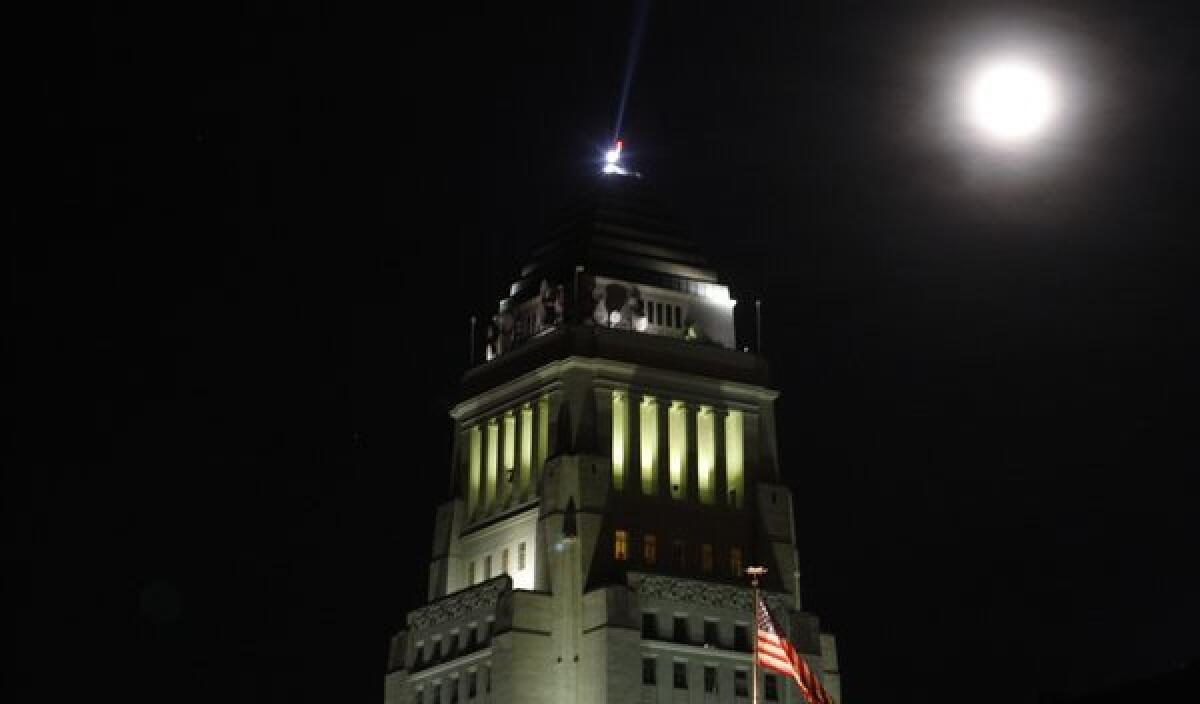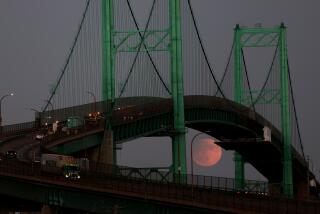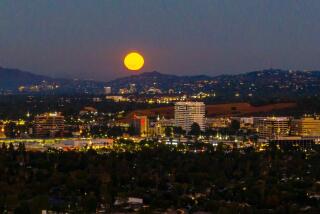Tonight’s blue moon is a rare variety

There’s a rare blue moon rising on Tuesday night and the good news is that you can’t miss it if you take the time to look up.
The slightly disappointing news is that the moon won’t actually look any bluer than usual. It will still be its familiar silvery self, and because it is a full moon it will also be very round and bright.
So, why is tonight’s full moon called a blue moon?
PHOTOS: Moons of the solar system
The answer is convoluted.
There are actually two definitions for the term.
A blue moon is usually defined as the second full moon to occur in a single calendar month. Most of the time there is just one full moon per month, but occasionally there are two. Under this definition, the last blue moon occurred on Aug. 31, 2012, and the next one will occur July 2015.
But there is another definition of blue moon that probably preceded the more familiar one. As Sky & Telescope explains, the original meaning of blue moon, as used by the Maine Farmers’ Almanac, was the third moon of four in a season. Most of the time there are just three moons in a single season, but every once in a while, there are four moons in that time. The extra moon is called the blue moon.
Tuesday night’s blue moon is an extra summer moon -- the third moon of four in the season that started on the June solstice and ends with the September equinox.
If you want to see Tuesday night’s blue moon at its very fullest, set your alarm to 6:45 p.m. PDT and then go outside and look up.
And one final note: There actually are times when the moon appears to be blue, but that tends to happen after a volcano erupts or after a major forest fire. Ash in the atmosphere can act as a blue filter.
Happy moon viewing!







